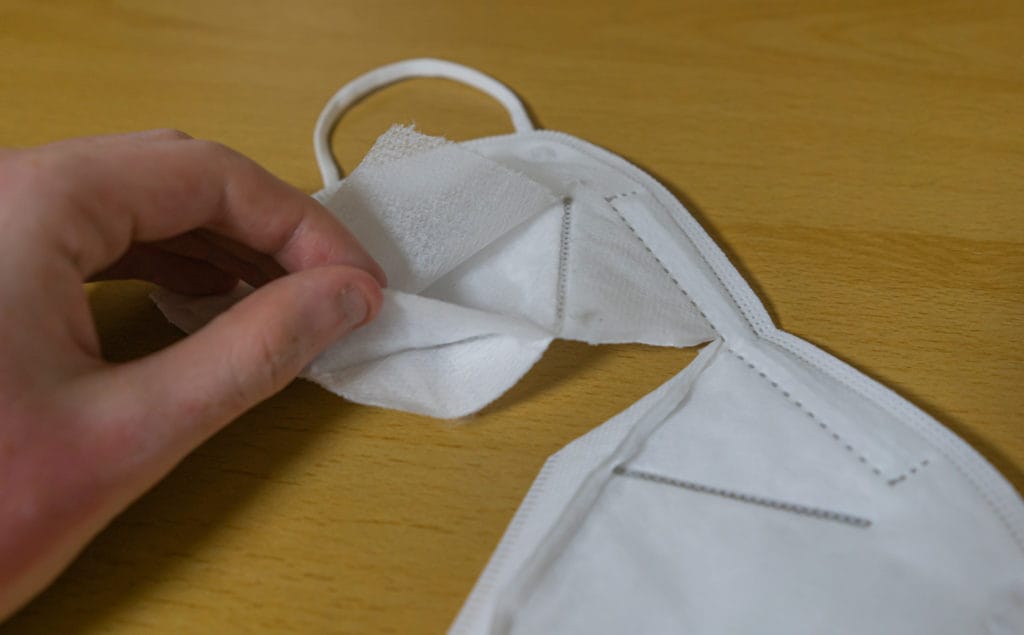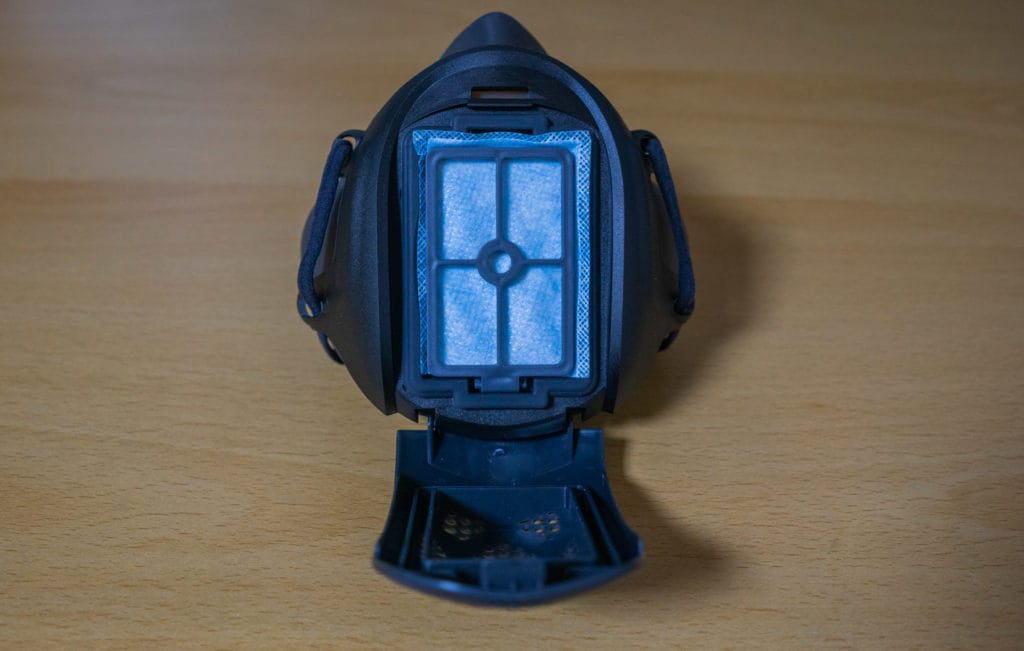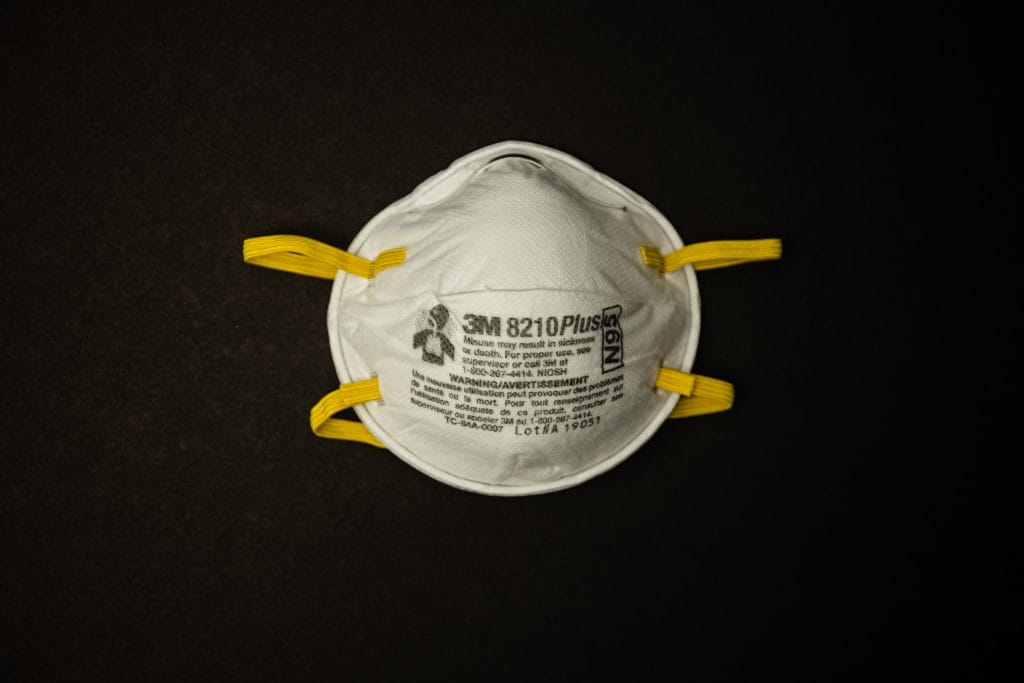Although the reuse of respirators has been advised against in the past (and by the CDC), times have changed recently.
With the lack of respirator supplies available, many people have found themselves in situations where they have to reuse the respirators or masks that they have.
Ideally, an N95 (or similarly rated) respirator will only be used for 8 hours. However, in current times that isn’t always possible.
Luckily, there are some methods that can be used to preserve respirators while disinfecting them.
This article is for the reuse of N95 disposable respirators. Reusable respirators follow different guidelines and can be cleaned differently. For more information on some reusable respirators, check out my Cambridge Mask review for fine dust.
Before I begin with disinfection methods that are looking promising at the current point in time, there are a few things that I would like to point out.
- Firstly, a new respirator is always ideal. Respirators are rated for 8 hours (in a single period) of use, and anything past this may not provide the rated protection.
- Secondly, there is still a large lack of research surrounding the reuse of respirators. There has never been such a large global shortage as there is today, and therefore research about the safety of mask reuse is still being done today.
- Thirdly, I am by no means an expert in this field. This article is meant to provide a more digestible form of research papers that has been conducted by many people around the world. This article is for informational purposes only.
If you want further information, please refer to the sources provided. A lot of time and effort has gone into the research behind these articles, and they provide more details than included here.
This post contains affiliate links. For more information, please refer to my affiliate disclaimer.
Information on this blog is for informational purposes only. Readers are encouraged to confirm the information herein with other sources. Furthermore, this information is not intended to replace medical advice from professionals. This website assumes no responsibility for the accuracy of the information, which is subject to change without notice.
Purchase Cloth Face Masks (recommended by the CDC) | Surgical Masks
Important Points to Remember

Filter layer on a KN95 mask.
Before you go about doing any kind of respirator disinfection there are a few key points to keep in mind.
- When cleaning respirators it is important to remember that structural integrity is key. Therefore, it is vital that the respirator doesn’t get deformed in any way. This means making sure that it isn’t crushed, stretched, or otherwise damaged.
- It is also important to remember that although respirators can be reused in times of need, that they should only be reused by the original wearer. That is to say, make sure that the respirator is always worn by the same person – other’s should not use the respirator as this can result in it being deformed.
- Further, a disposable respirator can not be used indefinitely. There will come a point when a new respirator is needed. This may be when it becomes difficult to breathe through, the straps start to disintegrate, or otherwise.
With the lack of research and differences between respirators, it’s hard to tell exactly when one should be replaced. However, once you get access to new respirators it is recommended to replace the old ones.
- Finally, a respirator is never fully effective without fit-testing. While fit-testing isn’t available for the majority of the public, it has been found that certain protection (PubMed) can be afforded to those who don’t have professional training but follow donning instructions as provided by the CDC or another official source.
Between uses masks must be refitted to ensure that they still create a seal and provide adequate filtration. No respirator or mask is effective if it doesn’t filter the air you breathe.
Craft Cadence Nanofiber Mask review.
Proven & Probable Methods of Respirator Disinfection

Although there are many methods emerging that have either been proven to or probable to disinfect respirators and masks there are fewer that are easily accessible in the home environment. In this article, I will only be discussing those that are accessible at home.
I must again state that much of this research is still in the early stages. Most of it is not peer-reviewed yet. However, at the time of writing these are the methods that look promising.
Time Based Disinfection
The first and most simple method in this article is time-based disinfection. Although research is still being done into this matter, it has been shown that viruses can exist for one week on masks.
Therefore, time-based disinfection will only work in some situations. If you have a multitude of masks (enough that each can be left at least one week between uses) or only need masks/respirators occasionally, then this may be a good strategy.
N95Decon (A scientific consortium for the data-driven study of N95 filtering facepiece respirator decontamination) states that although more specific data is needed, a mask should sit for at least a week between uses by the same user.
The mask or respirator should be left in an isolated, clean and aerated location. It is also important to make sure that the mask isn’t under pressure (so as to deform it).
It is important to remember that 7 days between uses is the minimum. Longer periods of time are better when possible, as the virus has been known to live for at least one week on surgical masks (The Lancet).
Dry Heat Based Disinfection

The easiest masks to clean are those with replaceable filters.
Perhaps the most promising method and one that is easily accessible for anyone at home is dry-heat based disinfection. The Journal of the International Society for Respiratory Protection found that dry heat at 77 degrees (Celsius) for 30 minutes can allow for reuse of an N95 respirator for 10 or more uses.
Further, another study found that using dry-heat to disinfect N95 respirators showed no alteration in the filtration efficiencies or N95 respirators within 20 cycles. Therefore, dry-heat based disinfection should allow for many uses of a respirator or mask.
Due to dry-heat based sources such as ovens being commonplace in homes, using dry heat to disinfect masks and respirators is one of the best and most reliable methods that can be used.
However, as with all disinfection methods it can‘t be relied upon indefinitely and respirators should be replaced once the opportunity arises.
Dry heat based disinfection currently looks to be the most promising in regards to retaining the filtration capabilities of N95 respirators under testing (Stanford).
Steam Based Disinfection
Another method that is getting a lot of attention is steam based disinfection. While steam-based methods appear to retain much of the filtration efficiency offered by respirators it is important to note that this method has been unproven for further reuses.
‘Using steam to disinfect requires caution, as the treatments may seem to be suitable, but prolonged treatment may leave the user with unsuitable protection” (ACS).
Recent testing done used microwave steam bags to disinfect N95 respirators using a microwave. This testing found that the respirators used continued to perform above the NIOSH requirements and continued to after three cycles.
However, it is important to note that this was done using microwaves at 1100w for 90 seconds. Microwaves of different powers may not function the same (CDC).
Purchase Cloth Face Masks (recommended by the CDC) | Surgical Masks
Disinfection Methods That Shouldn’t Be Used

Masks such as Gill Mask are designed to be easily cleaned.
There are many more methods that have been tested including UV and hydrogen peroxide. However, these methods are not ideal for use at home due to the fact that they only effectively clean respirators when used at very specific specifications.
UV Light
UV lighting is an effective method of disinfection when used correctly. However, it is not recommended for anyone outside of a professional setting.
‘Due to the precision required, home UV light use is not recommended. This method of decontamination has been implemented by some hospital systems in the United States’ (SAGES). This is due to the fact that the full surface must be exposed to the light, otherwise harmful particles can live on.
Further, cleaning visa UV light requires special tools that most people will not have easy access to. For this reason, other methods on this list may prove better for those at home.
Sunlight
UV sunlight should not be used for mask disinfection in any case. UV-A is considered non-germicidal, and UV-B is slightly so, while UV-C is the strongest.
However, UV-C is absorbed by the top layer of the atmosphere and doesn’t reach the surface of the earth. UV-B on the other hand, is estimated to take 57-5000 days to kill germs on a respirator (N95Decon).
Sunlight should not be relied upon to disinfect respirators and masks.
Hydrogen Peroxide
While often effective in a hospital environment, it is not a recommended method for anyone at home. Exact concentrations are needed and not everyone will have quick access to hydrogen peroxide.
It is better to turn to one of the heat based methods or the time based methods mentioned above.
Other Methods to Be Avoided
There are also many other methods that are best avoided. Most of these methods are ‘wet’ and these should be avoided as they can degrade the filtration capabilities of the respirator.
These are other methods that should be avoided according to SAGES:
- Bleach
- Alcohol
- Baking
- Boiling
- Ethylene oxide
- May be toxic to the wearer
- Microwave
- At-home microwaving is not recommended because of variable power settings, and metal portions of the masks may catch fire.
- Sanitizing wipes
- Soapy Water
It is important to note that while other methods of disinfection may also come to light over the coming weeks and months that no method should be used unless supported by research.
Before using any method on this list or otherwise, make sure to check sites such as the CDC for the latest information regarding disinfection methods.
Purchase Cloth Face Masks (recommended by the CDC) | Surgical Masks
Conclusion

Some research points towards dry heat at 75 degrees for 30 minutes to be the best method of disinfecting respirators and retaining filtration efficiency.
I will be checking back in the future to see if any information changes and to keep updated on the best methods for cleaning masks and respirators.
If you are interested in reading more about the latest news regarding respirator disinfection then I recommend reading the latest updates by the CDC. N95Decon is also a fantastic resource that is updated regularly.
Further reading on respirators:
Read more: Totobobo mask from Singapore. 99% filtration and replaceable filters.
FAQ
What Is the Easiest Way to Disinfect My Mask?
The Journal of the International Society for Respiratory Protection found that dry heat at 77 degrees (Celsius) for 30 minutes can allow for reuse of an N95 respirator for 10 or more uses.
What Methods of Disinfection Should be Avoided?
Every method that isn’t proven and backed by research should be avoided. Among those are methods involving bleach, alcohol, baking boiling, ethylene oxide, microwave, sanitizing wipes, soapy water, and UV light (including sunlight). While UV light and microwave disinfection can work, they require very specific conditions that most people won’t have access to.
Does Time-Based Disinfection Work?
N95Decon states that although more specific data is needed, a mask should sit for at least a week between uses by the same user. It is important to remember that 7 days between uses is the minimum. Longer periods of time are better when possible, as the virus has been known to live for at least one week on surgical masks (The Lancet).
Where Can I Find the Latest Disinfection Methods?
Since respirator disinfection is a relatively new field, it’s important to pay attention to new data and research. N95Decon is a great source of information. Medical and research journals such as The lancet are also good sources. Never rely on, or believe information from non-official sources.
Have Questions or Comments?
Join the discussion on the BreatheSafeAir Community Forum. Ask any questions you have about air quality or adjacent topics and get quick answers!
The comment against sunlight and UV light for disinfection of the Coronaviruses seems to be wrong as research has found that unfiltered sunlight kills COVID near-instantly, and here in the Sonora Desert (Arizona) with a UV index of 11 this is easy to do. The question is whether enough light will penetrate the fibers the kill whatever is inside the filter. The comment on UVA,B,&C is not correct: UVC is absorbed by oxygen and ozone readily and will not travel more than a few inches / centimeters (certainly less than a meter / yard), while UVB has no such limitation and will kill *MOST* bugs including Corona; however, some like anthrax spores and possibly polio-virus are immune or at least very resistant to UV. UVA generally is not germicidal.
Something I’ve been doing but I can’t be sure of the effectiveness is cooking my masks (or at least the filters) in my black car: in the intense Arizona subtropical summer heat the interior is at least 70C most likely, especially surfaces. Leaving it for a day or two will probably kill anything not resistant and Corona is not resistant to heat (in fact it loves the cold just like influenza).
Unfortunately I caught the virus a couple weeks ago: as my job is in a motel with heavy public contact and too many people refuse to wear masks or any other protection, I figure it was only a matter of time. THANK GOD the symptoms were mild as I have asthma and mild diabetes so it should have been much worse! I hope this helps those who are able to social distance properly, though.
Hello Mike,
Thank you for the detailed comment! A lot of research has been released in the weeks since I released this article and I will do some more research and see if I can update it to reflect new findings.
As you have pointed out, sunlight may be very effective at killing the virus, however, it lacks effectiveness at disinfecting respirators and masks due to the possible lack of penetration. This article is specifically aimed at mask disinfection, and therefore sunlight is not a reliable method.
I was wondering, could you clarify this statement a bit more? ‘The comment on UVA,B,&C is not correct: UVC is absorbed by oxygen and ozone readily and will not travel more than a few inches/centimetres (certainly less than a meter/yard), while UVB has no such limitation and will kill *MOST* bugs including Corona; however, some like anthrax spores and possibly polio-virus are immune or at least very resistant to UV. UVA generally is not germicidal’. In my post, I state that UVC is absorbed by the atmosphere, that UVA is non-germicidal, and that UVB can kill viruses, albeit very slowly at standard sunlight levels (Theoretical calculations for the necessary sunlight exposure time needed to achieve UV-B germicidal effects in US cities (equivalent to a 1.0J/cm2 UV-C dose) suggest timescales of 57 – 5000 days, depending on season and geographic location – N95Decon). It seems that your statement agrees with mine except that the timescale for UVB killing viruses is different. While UVB can most definitely kill viruses, at normal sunlight levels this can take a long time.
I am very glad to hear that you recovered from the virus! That must have been very scary. The lack of mask-wearing can definitely be very concerning and even frustrating! I wanted to start this website in order to spread some awareness.
This article, which seems to be written by credible experts, suggests much shorter times for sunlight killing the virus:
https://www.ncbi.nlm.nih.gov/pmc/articles/PMC7300806/pdf/PHP-9999-na.pdf
I’ll have a look at the one you link, which is much more pessimistic.
Hello again Gareth,
Thank you for your comment!
It seems that the effectiveness of UV in killing the virus is still debated. However, the information in this article still stands. Even if UV-C can kill the virus in 11-34 minutes (as the article that you linked suggests), it is not a viable disinfection method.
Firstly, this is under controlled UV levels. In real life, we can’t control these levels and we have no idea how strong the UV is (and therefore the virus’s lifespan) at any given time.
Secondly, this only applies to surface viral particles. However, with a mask, it is possible for viruses to exist on a surface of the mask shaded from UV (for example, on the filter under the cloth layer).
For this reason, UV is not a safe disinfection method. Heat based methods are far more reliable as the heat is more evenly distributed and can kill the particles which aren’t accessible by UV.
Yes, I think the article I linked is probably more relevant to judging how long things that are outside (a park bench, say) are likely to retain live virus. It isn’t proposing that putting things outside is a way to disinfect them.
It appears to be modelling direct, midday sun. So, it is just the maximum virus killing rate. Clouds or shade will significantly lengthen the rate (as will having virus below the surface of an object, as you say).